Published on 11 minute ago
Fractional Laser Treatment: Everything You Need to Know
- ByMedical Content Team
- Medically Reviewed byDr. Sabine Kulhanek
Fact checked

- What is fractional laser treatment?
- What is fractional laser therapy used for?
- Who are suitable candidates for fractional laser resurfacing?
- How is fractional laser treatment different from other laser treatments?
- How fractional lasers work
- How fractional laser treatment is performed
- What to expect after the procedure
- Risks and side effects of fractional laser treatment
- Is Fraxel and fractional laser treatment the same?
- Fractional laser vs Pixel laser
- Fractional laser vs. intense pulsed light (IPL) therapy
- FAQs
Are you searching for an effective way to rejuvenate your skin and tackle issues like wrinkles, scars, and uneven tone? Fractional laser treatment might be your answer. This cutting-edge procedure has rapidly become a favorite in the skincare world, thanks to its ability to deliver significant results with minimal downtime.
In this blog post, we'll delve into the mechanics of fractional laser treatment, explore its benefits, and provide insights into what you can expect during your journey to healthier, more radiant skin. If you're ready to discover a powerful tool for skin rejuvenation, read on and learn how fractional lasers can help you unveil your best skin.
What is fractional laser treatment?
Fractional laser treatment, also known as fractional laser resurfacing, is a cosmetic procedure that uses laser technology to improve the appearance of the skin. It works by creating thousands of tiny, evenly-spaced microthermal zones on the skin's surface. These zones are columns of laser energy that penetrate the skin, causing controlled damage to the targeted area.
The benefits of fractional laser treatment include improving skin texture, reducing wrinkles, diminishing scars (such as acne scars), treating pigmentation issues, and tightening sagging skin. The treatment can be customized to different levels of intensity and can be performed on various areas of the body. Unlike traditional lasers that treat large areas at once, fractional lasers target only a fraction of the skin at a time, leaving the surrounding tissue intact. This innovative approach allows for quicker healing and more precise outcomes
What is fractional laser therapy used for?
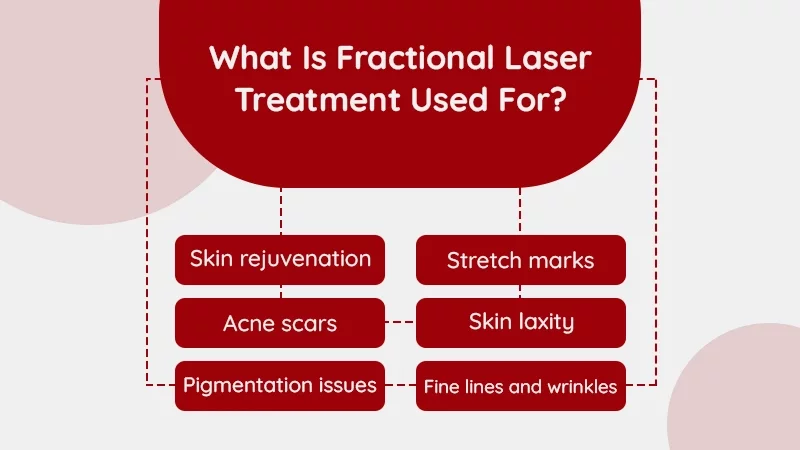
Fractional laser treatment is used to address various skin concerns and conditions. Here are some common uses:
- Skin rejuvenation: Fractional laser resurfacing can improve overall skin texture and tone, reducing the appearance of fine lines, wrinkles, and scars. It stimulates collagen production, promoting smoother and more youthful-looking skin.
- Acne scars: Fractional laser resurfacing is effective in reducing the appearance of acne scars, including atrophic and hypertrophic scars. It targets the scarred tissue, promoting collagen remodeling and skin regeneration.
- Pigmentation issues: Fractional laser treatment can help lighten and reduce the appearance of hyperpigmentation, such as sun spots (age spots), and melasma. The laser energy targets the pigmented areas, breaking up excess pigment and promoting even skin tone.
- Stretch marks: Fractional laser therapy can improve the appearance of stretch marks by stimulating collagen production and remodeling the affected skin.
- Skin laxity: Fractional laser treatment can help tighten loose or sagging skin. It stimulates collagen production, which leads to firmer and tighter skin.
- Fine lines and wrinkles: Fractional laser resurfacing can target fine lines and wrinkles, especially in areas such as the forehead, around the eyes (crow's feet), and around the mouth.
It's important to consult with a qualified healthcare professional or dermatologist to determine if fractional laser treatment is suitable for your specific concerns and to discuss the potential benefits and risks associated with the procedure. They will assess your skin condition and provide personalized recommendations for achieving your desired results.
Who are suitable candidates for fractional laser resurfacing?
Suitable candidates for fractional laser treatment typically include individuals who have specific skin concerns and conditions that can be addressed by the procedure. Here are some factors that make someone a potential candidate:
- Skin concerns: Candidates may have concerns such as fine lines, wrinkles, acne scars, pigmentation irregularities, stretch marks, or skin laxity that they wish to improve.
- Skin type: Fractional laser treatment is generally safe for various skin types, including fair to medium and some darker skin tones. However, individuals with darker skin tones may have a higher risk of post-treatment hyperpigmentation and should consult with a skilled healthcare professional.
- Realistic expectations: Suitable candidates have realistic expectations about the outcome of the treatment. While fractional laser skin resurfacing can provide significant improvements, it may not completely eliminate all skin concerns or guarantee perfect results.
- General health: Candidates should be in overall good health without any underlying medical conditions that may interfere with the healing process.
- Non-pregnant or breastfeeding: It is generally recommended to postpone fractional laser treatment if you are pregnant or breastfeeding, as the effects on the fetus or infant have not been extensively studied.
- No active infections: Candidates should not have any active skin infections or open wounds in the treatment area.
- Commitment to aftercare: Suitable candidates are willing to follow the post-treatment care instructions provided by the healthcare professional to ensure proper healing and minimize the risk of complications.
It is crucial to consult with a qualified healthcare professional or dermatologist who will assess your specific skin concerns, perform a thorough evaluation, and determine if you are a suitable candidate for fractional laser treatment. They will consider your individual factors and provide personalized recommendations for achieving optimal results.
How is fractional laser treatment different from other laser treatments?
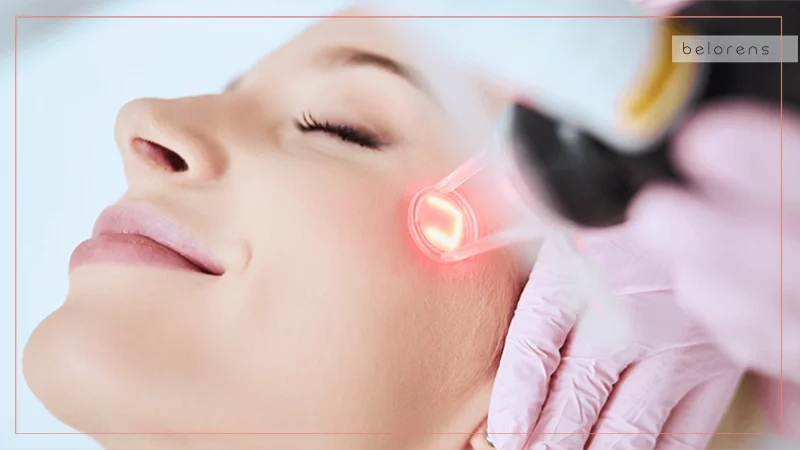
Fractional laser resurfacing differs from other laser treatments in terms of the way the laser energy is delivered to the skin and the depth of treatment. Here are some key differences:
- Delivery of laser energy: Fractional laser treatment delivers laser energy in a fractionated pattern, creating microthermal zones on the skin. These zones are surrounded by untreated tissue, which helps with the healing process. Other laser treatments, such as traditional laser resurfacing, deliver laser energy uniformly across the entire treatment area.
- Depth of treatment: Fractional laser treatment can be ablative or non-ablative. Ablative fractional lasers remove thin layers of skin, targeting both the epidermis (outer layer) and the dermis (deeper layer). Non-ablative fractional lasers target the dermis without removing the surface skin. Other laser treatments may have varying depths of penetration, depending on the specific treatment modality and the desired outcome.
- Healing and recovery: Fractional laser treatment creates microthermal zones, leaving healthy tissue intact around each zone. This promotes faster healing compared to traditional laser resurfacing, where the entire treated area is affected. The fractional approach often results in less downtime, reduced side effects, and faster recovery.
- Treatment targets: Fractional laser treatment can address a range of skin concerns, including wrinkles, fine lines, acne scars, pigmentation irregularities, and skin laxity. Other laser treatments may have specific targets, such as vascular lesions (e.g., laser for spider veins) or hair removal (e.g., laser hair removal).
- Customization and versatility: Fractional laser resurfacing offers a high level of customization and versatility. The intensity and depth of treatment can be adjusted based on individual needs and desired outcomes. This allows for a tailored approach to address different skin conditions and treatment goals.
It is important to consult with a qualified healthcare professional or dermatologist to determine the most suitable laser treatment for your specific concerns and desired results. They will assess your skin condition and recommend the appropriate treatment modality that aligns with your needs and expectations.
How fractional lasers work
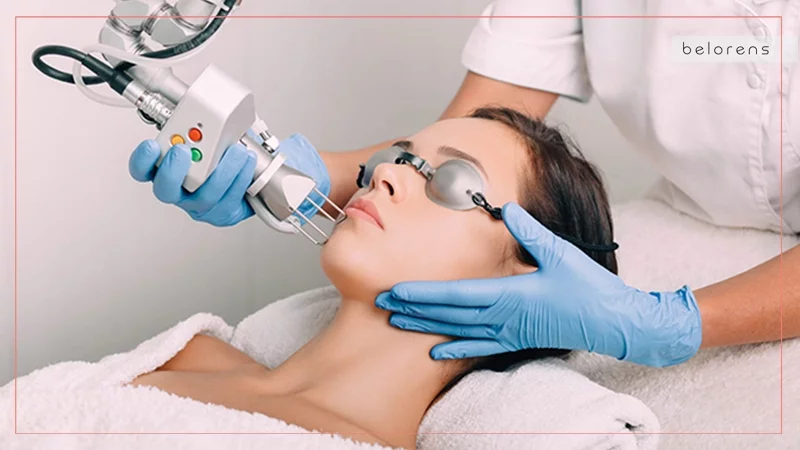
Fractional lasers work by delivering laser energy in a fractionated or fractional pattern to the skin. This means that the laser energy is divided into thousands of microscopic treatment zones, leaving surrounding healthy tissue untouched. The process typically involves the following steps:
- Microthermal zones: The laser creates tiny columns of heat energy, known as microthermal zones, within the skin. These zones penetrate into the deeper layers of the skin, such as the dermis.
- Controlled damage: The laser energy causes controlled damage to the targeted areas, typically by creating small, controlled wounds or thermal injury. This triggers the body's natural healing response.
- Collagen stimulation: The controlled damage stimulates the production of new collagen, a protein that provides structure and firmness to the skin. Collagen remodeling occurs as the skin heals, resulting in improved skin texture, firmness, and overall rejuvenation.
- Skin regeneration: As the skin heals, the damaged tissue is replaced with new, healthier skin cells. This can lead to a reduction in the appearance of fine lines, wrinkles, scars, pigmentation issues, and other skin concerns.
The fractional laser treatment can be ablative or non-ablative. Ablative fractional lasers remove thin layers of skin, while non-ablative fractional lasers target the deeper layers without removing the surface skin. Both types stimulate the body's natural healing process, promoting the production of new collagen and elastin, which leads to skin rejuvenation.
The depth and intensity of the fractional laser treatment can be adjusted based on the specific skin concerns and treatment goals. Ablative fractional lasers remove thin layers of skin, while non-ablative fractional lasers target the deeper layers without removing the surface skin.
The fractional approach of delivering laser energy allows for faster healing and recovery compared to traditional laser resurfacing, where the entire treated area is affected. It also promotes the regeneration of skin cells and the production of new collagen, leading to skin rejuvenation and improvement in various skin concerns.
It's important to note that the exact mechanism of action may vary depending on the specific type of fractional laser used, such as CO2 fractional lasers, erbium fractional lasers, or non-ablative fractional lasers. The choice of laser treatment will depend on factors such as the desired outcome, skin type, and the expertise of the healthcare professional.
How fractional laser treatment is performed
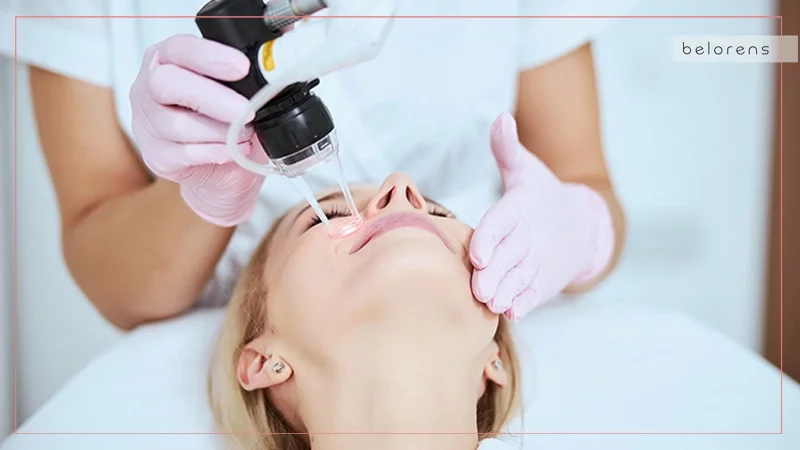
Fractional laser treatment is typically performed in a healthcare professional's office or a medical spa setting. The procedure involves the following steps:
- Consultation: Before the treatment, you will have a consultation with a healthcare professional, such as a dermatologist or aesthetician. They will assess your skin concerns, evaluate your skin type, discuss your treatment goals, and determine if you are a suitable candidate for fractional laser treatment.
- Preparing the skin: On the day of the treatment, the skin is thoroughly cleansed and may be prepped with a topical numbing cream to minimize any discomfort during the procedure. Protective eyewear will be provided to shield your eyes from the laser light.
- Protective eyewear: To protect your eyes from the laser light, you will be provided with special protective eyewear to wear during the procedure.
- Laser treatment: The healthcare professional will use a handheld fractional laser device and move it across the treatment area. The laser emits precise beams of laser energy, creating microthermal zones within the skin. The sensation during the treatment can vary from mild heat to a pricking or snapping sensation, but the numbing cream helps to minimize any discomfort.
- Cooling measures: Some fractional laser devices have built-in cooling mechanisms, such as a chilled tip or a cooling spray, to help keep the skin cool and minimize discomfort during the procedure.
- Post-treatment care: After the treatment, the healthcare professional may apply a soothing ointment or cooling gel to the treated area to alleviate any discomfort and promote healing. They will provide specific post-treatment care instructions, which may include avoiding sun exposure, using gentle skincare products, and applying sunscreen regularly.
The healthcare professional may also schedule any necessary follow-up appointments to monitor your progress and adjust the treatment plan if needed.
What to expect after the procedure
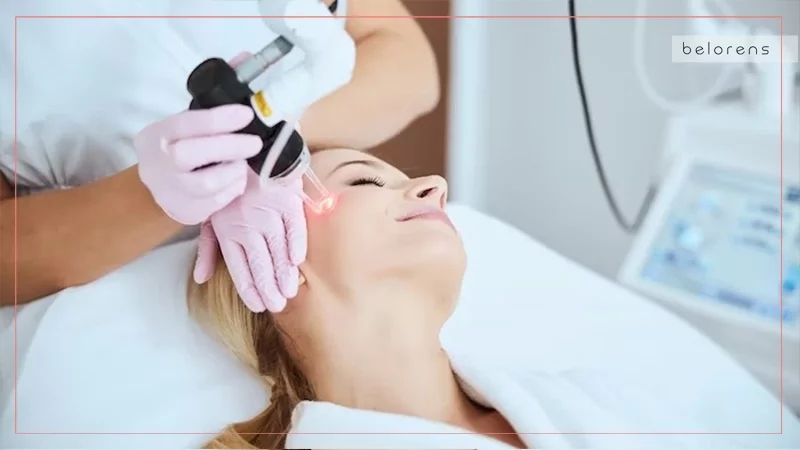
After undergoing fractional laser treatment, you can expect certain effects and should follow specific post-procedure care instructions. Here's what you can expect after the procedure:
- Redness and swelling: It is common to experience some redness and swelling in the treated area immediately after the procedure. This is a normal response to the laser treatment and typically subsides within a few days to a week, depending on the intensity of the treatment.
- Sensation of heat or sunburn: You may feel a mild heat or sunburn-like sensation in the treated area, which can last for a few hours to a couple of days. This discomfort can usually be managed with over-the-counter pain relievers or prescribed medications, if necessary.
- Skin peeling and flaking: As the skin heals, you may notice some peeling, flaking, or crusting in the treated area. This is a natural part of the skin's regeneration process and should not be forcefully removed. It is important to allow the skin to exfoliate naturally and avoid picking or scratching the treated area.
- Downtime: The amount of downtime can vary depending on the intensity of the treatment. In general, you can expect a few days to a week of downtime, during which you may prefer to limit your social activities or plan them accordingly. It is advisable to avoid activities that can cause excessive sweating or irritate the treated area, such as intense exercise or hot showers.
- Sun protection: It is crucial to protect your skin from the sun during the healing process and beyond. The treated skin will be more sensitive to UV radiation, so it is recommended to wear sunscreen with a high SPF, protective clothing, and a wide-brimmed hat when going outdoors. Sun exposure can increase the risk of complications and hinder the healing process.
- Post-treatment skincare: Your healthcare professional will provide specific post-treatment care instructions. This may include using gentle cleansers and moisturizers, avoiding harsh skincare products or treatments, and applying any prescribed ointments or creams. It is important to follow these instructions diligently to promote proper healing and minimize the risk of complications.
- Follow-up appointments: The healthcare professional may schedule follow-up appointments to assess your progress, monitor the healing process, and determine if any additional treatments or adjustments are needed.
It's important to note that the specific effects and recovery timeline can vary depending on the individual, the intensity of the treatment, and the specific laser technology used. It's always best to consult with your healthcare professional for personalized guidance and to address any concerns or unexpected symptoms after the procedure.
Fractional laser resurfacing cost
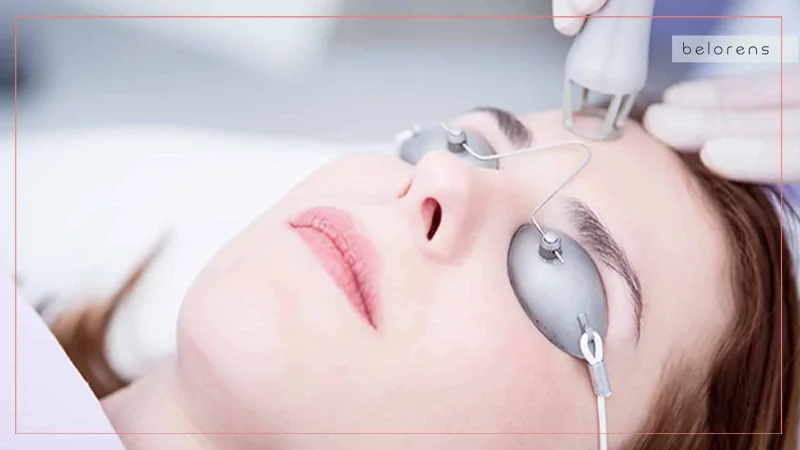
The cost of fractional laser treatment can vary depending on several factors, including the geographic location, the expertise of the healthcare professional, the specific type of fractional laser used, the size of the treatment area, and the number of sessions required. Additionally, the cost may also vary based on the specific skin concern being addressed.
On average, the cost of a single fractional laser resurfacing session can range from $500 to $3,000 or more. However, it's important to note that this is a rough estimate and prices can vary significantly.
The total cost of fractional laser therapy will depend on the number of treatment sessions recommended by the healthcare professional. Some individuals may achieve their desired results with just one session, while others may require multiple sessions for optimal outcomes. The number of sessions needed will depend on factors such as the severity of the skin concern, the desired level of improvement, and the individual's response to treatment.
During a consultation with a qualified healthcare professional or dermatologist, they will assess your specific skin concerns, discuss treatment options, and provide you with a detailed cost estimate based on your individual circumstances.
It's important to note that insurance typically does not cover the cost of cosmetic procedures like fractional laser treatment unless it is performed for a specific medical condition. Additionally, some healthcare professionals may offer package deals or discounts for multiple treatment sessions.
Risks and side effects of fractional laser treatment
Fractional laser treatment is generally considered safe when performed by a qualified healthcare professional. However, like any medical procedure, there are potential risks and side effects. It's important to be aware of these before undergoing treatment. Here are some common risks and side effects associated with fractional laser therapy:
- Redness and swelling: It is common to experience temporary redness and swelling in the treated area immediately after the procedure. This usually resolves within a few days to a week.
- Discomfort or pain: Some individuals may experience mild discomfort or pain during the treatment, which can be managed with topical numbing creams or pain medications. The sensation is often described as a warm, prickling, or snapping feeling.
- Skin sensitivity: Following the treatment, your skin may be more sensitive to touch, heat, or sunlight. It is important to protect your skin from excessive sun exposure and to use sunscreen regularly.
- Itching or dryness: You might experience temporary itching or dryness in the treated area as the skin heals. It is important to avoid scratching or picking at the skin to prevent any complications.
- Skin color changes: In some cases, fractional laser resurfacing may cause temporary or, rarely, permanent changes in skin pigmentation. This can manifest as either darkening (hyperpigmentation) or lightening (hypopigmentation) of the skin. Individuals with darker skin tones are more prone to these pigmentary changes.
- Scarring: While rare, there is a small risk of scarring associated with fractional laser treatment. This risk can be minimized by following the post-treatment care instructions and avoiding any irritants or trauma to the treated area during the healing process.
- Infection: Although uncommon, there is a slight risk of infection following the procedure. It is crucial to keep the treated area clean and follow proper post-treatment care instructions to minimize the risk of infection.
- Eye injury: Protective eyewear is provided during the treatment to shield your eyes from the laser light. It is essential to wear this eyewear as directed to prevent any potential eye injury.
Is Fraxel and fractional laser treatment the same?
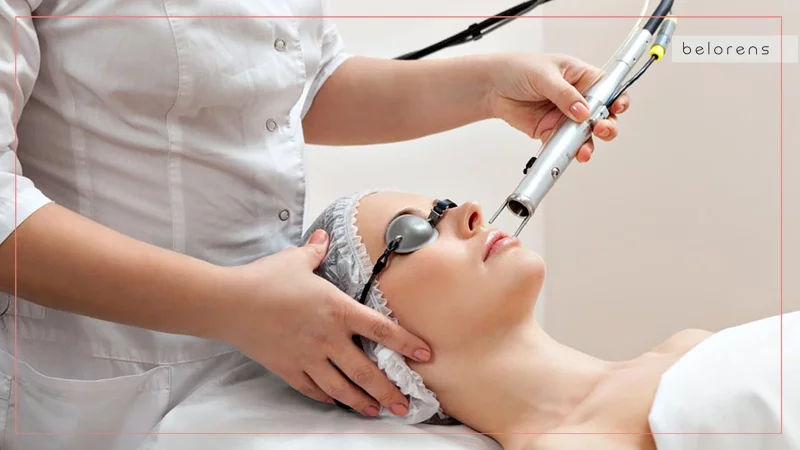
Fraxel is a specific brand name for fractional laser treatment. It is a type of fractional laser technology developed by Solta Medical. Fraxel lasers use a fractional approach to deliver laser energy in a pattern of tiny, evenly-spaced columns to the skin. This treatment aims to stimulate collagen production, improve skin texture, and address various skin concerns.
While Fraxel is a well-known and popular brand of fractional laser treatment, it's important to note that there are other brands and types of fractional lasers available in the market. These include CO2 fractional lasers, erbium fractional lasers, and non-ablative fractional lasers, among others. Each type of fractional laser may have slight differences in terms of wavelength, energy intensity, and treatment parameters.
Fractional laser vs Pixel laser
Pixel laser is also a specific type of fractional laser, which uses a grid-like pattern to treat the skin. It’s designed to create tiny, pixel-sized perforations in the skin, promoting rapid healing and collagen regeneration. The high precision of pixel laser resurfacing ensures precise targeting of skin issues, making it particularly beneficial for treating acne scars and other types of scarring. The rapid recovery time associated with pixel laser resurfacing is another key benefit, as the small size of the treatment areas allows for quicker healing.
Similar to fractional lasers, pixel lasers create micro-injuries in a pattern across the skin. This stimulates the body's natural repair mechanisms, resulting in improved skin texture and tone. The pixelated approach allows for uniform treatment, making it ideal for larger areas or more generalized skin concerns.
While both fractional and pixel laser resurfacing share similarities in their approach and benefits, there are distinct differences that might make one more suitable for your needs. Fractional laser treatment offers broader treatment capabilities for various skin issues, while pixel laser resurfacing focuses on highly precise, pixel-sized areas, ideal for detailed work on scarring and fine lines. Generally, fractional laser treatments offer quicker recovery than traditional lasers, but this may vary depending on the specific technology used. Pixel laser resurfacing typically allows for faster healing due to the smaller, pixel-sized treatment areas.
Fractional laser vs. intense pulsed light (IPL) therapy
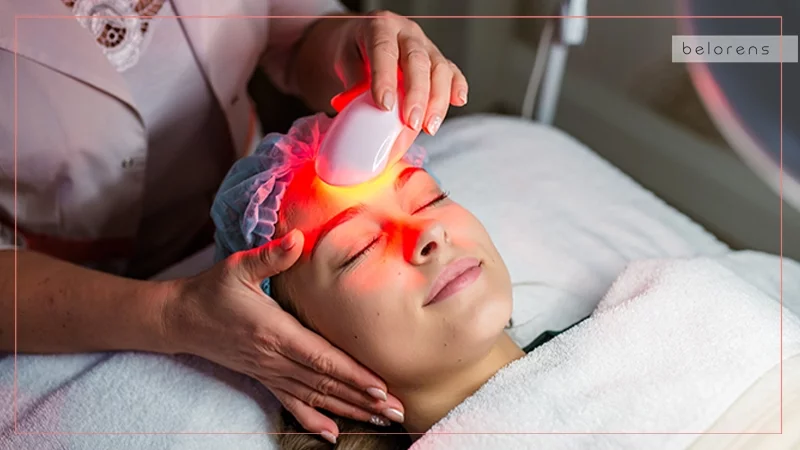
Fractional laser therapy and intense pulsed light (IPL) therapy are both popular non-invasive cosmetic procedures used to improve the appearance of the skin. While they have some similarities, there are also notable differences in terms of their mechanisms of action, target skin concerns, and treatment outcomes.
Fractional laser therapy uses a laser device that delivers precise, concentrated beams of light into the skin. These lasers create micro-injuries in the skin, stimulating the body's natural healing response and promoting collagen production. The fractional approach treats only a fraction of the skin, leaving surrounding tissues unaffected, which aids in faster healing.
On the other hand, IPL therapy utilizes broad-spectrum light pulses to target specific chromophores in the skin, such as melanin (pigment) or hemoglobin (blood vessels). The light energy is absorbed by these chromophores, resulting in various therapeutic effects depending on the desired treatment goal.
Fractional laser therapy is commonly used to address a wide range of skin concerns, including fine lines and wrinkles, acne scars, surgical scars, uneven skin tone, sun damage, and age spots. It can also help to improve skin texture and overall skin rejuvenation.
IPL therapy is primarily used to target and treat specific skin concerns related to pigmentation, such as age spots, sunspots, freckles, and vascular issues like broken capillaries, rosacea, and facial redness. It can also be used for hair removal, although laser hair removal is generally more effective for this purpose.
IPL therapy is effective in improving the appearance of pigmented lesions and vascular issues. It can help to reduce the appearance of sunspots, redness, and other pigmentation irregularities. Multiple treatment sessions are typically needed for the best results, and maintenance treatments may be required to sustain the improvements.
Also Read: Microdermabrasion: What to Know About This Skin Treatment
It's important to consult with a qualified healthcare professional or dermatologist to determine which treatment option is most suitable for your specific skin concerns and goals. They will assess your individual needs, discuss the potential benefits and risks, and recommend the most appropriate treatment plan for you.
FAQs
How many sessions of fractional laser treatment do I need?
The number of fractional laser treatment sessions needed varies depending on individual factors and desired outcomes. Typically, 3-5 sessions are recommended for optimal results.
How long do the results from fractional laser resurfacing last?
The results from fractional laser treatment can last for several months to a few years. However, maintenance treatments may be necessary to sustain the improvements over the long term.
Does fractional laser treatment hurt?
Fractional laser resurfacing can cause some discomfort or pain, but topical numbing creams or pain medications are often used to minimize any discomfort during the procedure.
How long does fractional laser therapy take?
The duration of fractional laser treatment can vary depending on the size of the treatment area and the specific laser technology used. Typically, a session can take anywhere from 15 minutes to an hour.
How soon after fractional laser treatment will I see the results?
The results of fractional laser treatment may be visible immediately after the procedure, but optimal results are usually seen after the skin has fully healed, which can take several weeks.
What are the most common target areas of fractional laser treatment?
The most common target areas for fractional laser skin resurfacing include the face, neck, chest, hands, and other areas with concerns such as wrinkles, scars, pigmentation issues, or skin texture irregularities.
Can I wear makeup after fractional laser resurfacing?
It is generally recommended to avoid wearing makeup immediately after fractional laser resurfacing to allow the skin to heal properly. Typically, it is advisable to wait at least 5-7 days or as advised by your healthcare professional before applying makeup to ensure proper healing of the treated skin.
Does fractional laser treatment really work?
Fractional laser treatment has been shown to be effective in addressing a variety of skin concerns, including wrinkles, scars, pigmentation issues, and overall skin rejuvenation. However, individual results may vary, and consultation with a healthcare professional is important to determine if it is suitable for your specific needs.


